Activewear & تقنية ارتداء اليوغا & المواد: دليل المشتري لأقمشة الأداء ، البناء & متانة؟
يمكن أن يكون اختيار المواد المناسبة وتقنيات البناء للأزياء النشطة ساحقة. تختار العديد من الشركات الأقمشة غير المناسبة أو أساليب البناء غير الكافية ، مما يؤدي إلى منتجات حبوب منع الحمل ، أو تفقد الشكل ، أو تفشل في الأداء كما هو موعود ، إتلاف سمعة العلامة التجارية.
تجمع Activewear عالي الجودة بين أقمشة الأداء الفني مع تقنيات البناء المتخصصة. تشمل السمات الرئيسية امتدادًا رباعي الاتجاه للحركة غير المقيدة ، وترويج الرطوبة للحفاظ على الجلد جافًا ، ومتانة من خلال الغسلات المتعددة ، ووضع التماس الاستراتيجي لمنع الغضب. يضيف ملابس اليوغا المتفوقة اعتبارات للتعري أثناء التوقيفات والضغط اللطيف الذي يحافظ على الشكل.
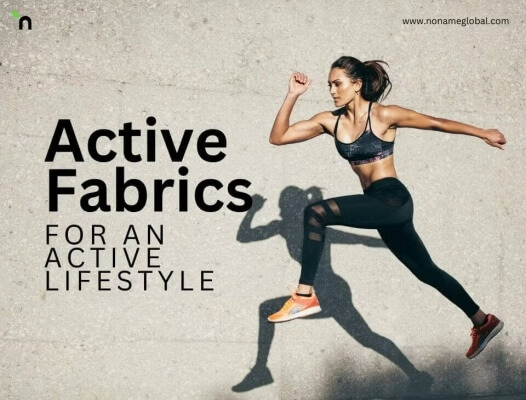
بصفتي الشركة المصنعة التي ساعدت في تطوير الملابس النشطة للعلامات التجارية الكبرى ، اكتسبت رؤى عميقة حول ما يجعل هذه المنتجات تؤدي. في وجود ، قمنا باختبار عدد لا يحصى من مجموعات المواد وتقنيات البناء لإنشاء ملابس نشطة تؤدي بشكل موثوق بينما تظل مريحة. اسمحوا لي أن أشارك ما تعلمناه حول المكونات الحرجة التي تجعل الملابس النشطة فعالة.
ما الذي يجعل أقمشة الأداء مختلفة عن الأقمشة العادية؟
تقلل العديد من الشركات من المتطلبات الفنية للأقمشة النشطة. فهم هذه الاختلافات أمر ضروري لإنشاء منتجات تؤديها حقًا أثناء النشاط البدني.
تختلف أقمشة الأداء عن أقمشة الملابس العادية بأربع طرق رئيسية: إدارة الرطوبة (عرق الفتل بعيدا عن الجسم) ، والتمدد والانتعاش (الحفاظ على الشكل أثناء الحركة) ، والمتانة (مع التآكل والغسيل المتكرر) ، والتشطيبات المتخصصة (مثل حماية مضاد أو UV). تتطلب هذه الخصائص الفنية تركيبات ألياف محددة وطرق البناء.
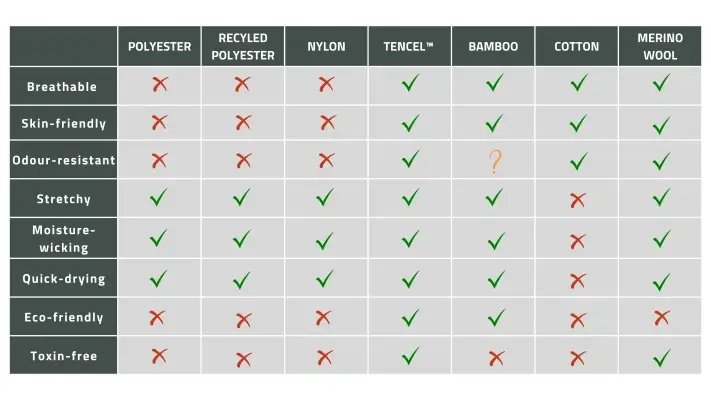
عندما نقوم بتطوير ActiveWear في وجودها ، فإننا نركز على هذه الخصائص التقنية التي تفصل بين الأقمشة الأداء عن مواد الملابس القياسية:
إدارة الرطوبة
ربما تكون إدارة الرطوبة الفعالة هي أكثر الخصائص تحديدًا للأقمشة الأداء:
آلية الفتل
تستخدم أقمشة الأداء حركة شعرية لجذب الرطوبة بعيدًا عن الجلد ونشرها عبر السطح الخارجي للنسيج ، حيث يمكن أن تتبخر بسرعة. تتضمن هذه العملية:
- طبقة داخلية مسعور: صد الرطوبة ضد الجلد
- طبقة خارجية ماء: يجذب الرطوبة على سطح القماش
- مسارات الشعيرات الدموية: القنوات التي تنقل الرطوبة إلى الخارج
إنشاءات النسيج لإدارة الرطوبة
| نوع البناء | أداء الفتل | أفضل ل |
|---|---|---|
| بوليستر الألياف الدقيقة | ممتاز | أنشطة عالية الكثافة |
| الفتل الميكانيكي (خيوط محكم) | جيد جدًا | أنشطة معتدلة ، ارتداء كل يوم |
| العلاجات الكيميائية | جيد (يقلل من الغسيل) | خيارات صديقة للميزانية |
| الفتل الطبيعي (الصوف ، الخيزران) | معتدل إلى جيد | المستهلكون الواعيون بالبيئة ، الجلد الحساس |
التمدد والانتعاش
القدرة على التمدد مع الحركة والعودة إلى الشكل الأصلي أمر بالغ الأهمية لأداء الملابس النشطة:
أربعة اتجاه مقابل امتداد ثنائي الاتجاه
- امتداد رباعي: يمتد على حد سواء أفقيا ورأسيا ، وتوفير أقصى قدر من حرية الحركة. ضروري لليوغا والرقص والأنشطة التي تتطلب مجموعة كاملة من الحركة.
- امتداد ثنائي الاتجاه: يمتد في اتجاه واحد فقط (عادة أفقيا). مناسبة للأنشطة ذات أنماط الحركة المحدودة.
عوامل الاسترداد
يجب أن تعود Activewear الجودة إلى شكلها الأصلي بعد التمدد. تشمل العوامل الرئيسية:
- محتوى الإيلستان: عادة 15-25 ٪ للتعافي الأمثل
- جودة الألياف: إيلاستين الممتاز يحافظ على الانتعاش لفترة أطول
- طريقة البناء: هياكل متماسكة تؤثر على أداء الانتعاش
- إعداد الحرارة: عمليات التصنيع المناسبة تضمن الانتعاش الدائم
اعتبارات المتانة
تواجه Activewear تحديات فريدة من نوعها:
- مقاومة التآكل: مع احتكاك من الحركة والمعدات
- مقاومة حبوب منع الحمل: الحفاظ على السطح الأملس على الرغم من التآكل المتكرر
- colorfastness: الاحتفاظ بالألوان على الرغم من العرق والغسيل والتعرض للأشعة فوق البنفسجية
- غسل المتانة: الحفاظ على خصائص الأداء من خلال الغسيل المتكرر
ينتهي الأداء المتخصص
غالبًا ما تتضمن الملابس النشطة الحديثة تقنيات أداء إضافية:
- مضاد للميكروبات: أيونات الفضة ، مركبات الزنك ، أو البدائل الطبيعية
- حماية الأشعة فوق البنفسجية: تصنيفات UPF للأنشطة في الهواء الطلق
- التنظيم الحراري: مواد تغيير الطور التي تساعد على تنظيم درجة حرارة الجسم
- مقاومة الماء/الرياح: DWR (طارد مياه متين) للاستخدام في الهواء الطلق
للحصول على نظرة عامة شاملة على فئة ActiveWear بأكملها ، بما في ذلك اتجاهات السوق وفرص العمل ، تفضل بزيارة دليل B2B النهائي للمصادر & بيع Activewear & ارتداء اليوغا.
ما هي الأقمشة التي تعمل بشكل أفضل لتطبيقات ActiveWear المختلفة؟
يعد اختيار النسيج المناسب لأنشطة محددة أمرًا ضروريًا لنجاح المنتج. تنطبق العديد من الشركات على نهج واحد يناسب الجميع يفشل في معالجة المطالب الفريدة للتمارين المختلفة.
تتطلب الأنشطة المختلفة خصائص النسيج المتخصصة: التدريبات عالية الكثافة تحتاج إلى أقصى قدر من إدارة الرطوبة والمتانة ؛ يوجا تتطلب امتدادًا ممتازًا ، والشفاء ، والتعتيم ؛ تتطلب الأنشطة في الهواء الطلق حماية الأشعة فوق البنفسجية وتنظيم درجة الحرارة ؛ في حين أن قطع Athleisure توازن بين الأداء مع الراحة والأناقة للارتداء اليومي.

في وجود ، نطابق خصائص النسيج مع متطلبات النشاط المحددة. إليك دليلنا لاختيار المواد المناسبة لتطبيقات مختلفة:
التدريب عالي الكثافة/الجري
تولد هذه الأنشطة حرارة وعرق كبير ، تتطلب:
- الأقمشة المثالية: مزيج بوليستر/الإيلاستين خفيف الوزن (80-85 ٪ بوليستر ، 15-20 ٪ من الإيلاستين)
- الخصائص الرئيسية: رطوبة فائقة الرطوبة ، والتجفيف السريع ، والوزن الخفيف
- بناء: هياكل الفتل الميكانيكية ، لوحات شبكية للتهوية
- نطاق الوزن: 140-200 GSM (غرام لكل متر مربع)
- ميزات إضافية: العلاجات المضادة للورم ، عناصر عاكسة للرؤية
أنشطة اليوغا والاستوديو
تتطلب هذه الممارسات الأقمشة التي تؤدي خلال حركات متنوعة وتطرح:
- الأقمشة المثالية: خلطات النايلون/الإيلاستين (75-80 ٪ من النايلون ، 20-25 ٪ الإيلاستين)
- الخصائص الرئيسية: امتداد رباعي ، الشفاء الممتاز ، العتامة عند امتدادها
- بناء: التصميم الداخلي المصقول للإحساس الناعم والضغط ولكن ليس مقيدًا
- نطاق الوزن: 220-280 GSM لللباس ، 180-220 GSM للقمم
- ميزات إضافية: النهاية غير اللامعة ، الحد الأدنى من اللحامات لمنع تهيج
الأنشطة في الهواء الطلق
التعرض البيئي يخلق متطلبات النسيج الفريدة:
- الأقمشة المثالية: مزج بوليستر متين ، أحيانًا مع تعزيز النايلون
- الخصائص الرئيسية: حماية الأشعة فوق البنفسجية ، مقاومة التآكل ، التجفيف السريع
- بناء: نسج أكثر صرامة أو حياكة من أجل المتانة ، نقاط الإجهاد المعزز
- نطاق الوزن: يختلف موسم (140-180 GSM Summer ، 200-300 GSM Winter)
- ميزات إضافية: تصنيفات UPF ، علاجات DWR ، خصائص مضادة للميكروبات
athleisure/نمط الحياة
يجب أن توازن هذه القطع الأداء مع الراحة اليومية:
- الأقمشة المثالية: مزيج من البوليستر/الإيلستان أو القطن/الإيلاستين
- الخصائص الرئيسية: الراحة ، الامتداد ، المظهر غير الرسمي مع مزايا الأداء
- بناء: الأسطح المصقولة ، والمظهر الهيذر ، والأزياء إلى الأمام
- نطاق الوزن: 200-320 GSM للهدوء ، 150-220 GSM للقمم
- ميزات إضافية: مقاومة التجاعيد ، رعاية سهلة ، تصفيف التقاطع
مخطط مقارنة النسيج
| نوع النسيج | إيجابيات | سلبيات | أفضل ل |
|---|---|---|---|
| البوليستر/الإيلاستين | إدارة الرطوبة الممتازة ، المتانة ، الاحتفاظ بالألوان | أقل تنفسًا من الألياف الطبيعية ، وإمكانية الاحتفاظ بالرائحة | التدريب عالي الكثافة ، الجري ، العناصر التي تركز على المتانة |
| النايلون/الإيلاستين | ممتدة والشفاء ، شعور اليد الناعمة ، المتانة | ارتفاع تكلفة ، أقل رطوبة من البوليستر | اليوغا ، أنشطة الاستوديو ، قطع الضغط |
| القطن/الإيلاستين | الشعور الطبيعي ، والتنفس ، والراحة | إدارة الرطوبة الضعيفة ، التجفيف الأبطأ ، أقل المتانة | الأنشطة الخفيفة ، athleisure ، قطع نمط الحياة |
| خلطات البوليستر المعاد تدويرها | قصة الاستدامة ، أداء مماثل للبوليستر البكر | تكلفة أعلى قليلاً ، تحديات الاتساق المحتملة | العلامات التجارية الواعية للبيئة ، وضع الاستدامة |
للحصول على رؤى حول إنشاء خط إنتاج كامل للملابس النشطة مع الأقمشة المناسبة للأنشطة المختلفة ، تفضل بزيارة دليلنا تنسيق مجموعتك: دليل B2B إلى ActiveWear & أنماط ارتداء اليوغا ، وظائف & خيارات المواد.
ما هي تقنيات البناء الضرورية للملابس النشطة الجودة؟
أساليب البناء تؤثر بشكل كبير على الأداء النشط والمتانة. تركز العديد من الشركات فقط على اختيار النسيج مع التغلب على الدور الحاسم لتقنيات البناء المناسبة.
يتطلب بناء الملابس النشطة الجودة تقنيات متخصصة: طبقات Flatlock أو Coverstitch لمنع الغضب ، وضع التماس الاستراتيجي لتعزيز الحركة ، التعزيز في نقاط الإجهاد ، وكثافة الغرز المناسبة للمتانة أثناء التمدد. لارتداء اليوغا ، تشمل الاعتبارات الإضافية إنشاء Gusset من أجل التصميم التنقل وتصميم حزام الخصر لأداء الإقامة.
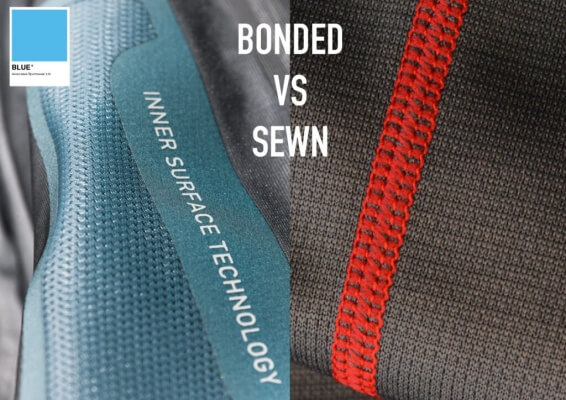
At HAVING, our "body-before-fabric" الفلسفة يوجه نهج البناء لدينا. نضع الأولوية للتقنيات التي تعزز الراحة والأداء أثناء الحركة:
بناء التماس
تقنيات التخليق الصحيحة ضرورية للراحة والمتانة:
طبقات مسطحة
- بناء: حوافان من القماش يتم تجميعهما معًا وخيطًا مسطحًا
- فوائد: الحد الأدنى من السائبة ، انخفاض الغضب ، مريح ضد الجلد
- أفضل ل: المناطق ذات التلامس المباشر للجلد ، وملابس الضغط
- اعتبارات: يتطلب آلات متخصصة ، ارتفاع تكلفة الإنتاج
CoverStitch
- بناء: خياطة متوازية مرئية على خيط خارجي محاط بالداخل
- فوائد: قدرة التمدد ، النهاية النظيفة ، المتانة
- أفضل ل: HEMS ، خطوط العنق ، المناطق التي تحتاج إلى امتداد
- اعتبارات: المظهر المهني ، تكلفة الإنتاج المعتدلة
طبقات أوفرلوك/سريدة
- بناء: حواف النسيج مخيط معًا وانتهت في عملية واحدة
- فوائد: كفاءة الإنتاج ، امتداد كافٍ
- أفضل ل: المناطق غير الحرجة ، البناء الداخلي
- اعتبارات: يمكن أن يسبب الغضب إذا تم استخدامه في المناطق الحساسة
طبقات مرتبطة/ملحومة
- بناء: الأقمشة تنصهر معًا باستخدام الحرارة أو لاصق
- فوائد: مظهر سلس ، إمكانات العزل المائي ، لا تغضب
- أفضل ل: المنتجات المتميزة ، والعناصر المقاومة للماء ، وقطع الوزن فائقة الوزن
- اعتبارات: أعلى تكلفة إنتاج ، يتطلب معدات متخصصة
وضع التماس الاستراتيجي
حيث يتم وضع طبقات تؤثر بشكل كبير على الراحة والأداء:
- خرائط الحركة: وضع طبقات بعيدا عن المناطق عالية الاحتكاك
- محيط الجسم: استخدام طبقات لتعزيز الملاءمة وتقديم الدعم
- توزيع الإجهاد: وضع استراتيجي لتوزيع التوتر
- التأثير البصري: استخدام طبقات لإنشاء تأثيرات التخسيس أو تعزيز
عناصر البناء الحرجة
بناء حزام
حزام الخصر ضروري للراحة والوظيفة:
- مرتفعة مقابل منتصف الارتفاع: احتياجات البناء المختلفة على أساس الارتفاع
- المرونة الداخلية: يوفر الدعم بدون اتصال جلدي مباشر
- بطانة powermesh: يضيف ضغط ودعم لطيف
- البناء Gusset: شكل الماس أو البيضاوي لتحقيق أقصى قدر من التنقل
البناء حمالة الصدر الرياضية
يتطلب الدعم والراحة تقنيات متخصصة:
- التغليف مقابل الضغط: بناء مختلف لاحتياجات الدعم المختلفة
- تصميم حزام: تعزيز المناطق الحاملة للوزن
- بناء الفرقة: نطاقات مرنة أو نسيج واسعة للدعم
- أكواب قابلة للإزالة: البناء يسمح بوسادات التواضع الاختيارية
مؤشرات الجودة في البناء
عند تقييم جودة بناء الملابس النشطة ، ابحث عن:
| مؤشر الجودة | ما الذي تبحث عنه | لماذا يهم |
|---|---|---|
| كثافة غرزة | 8-12 غرز لكل بوصة | يضمن قوة التماس أثناء التمدد |
| اختيار الموضوع | نسج نايلون الأساسي أو بوليستر محكم | يوفر التمدد والمتانة |
| محاذاة التماس | مطابقة دقيقة عند التقاطعات | يشير إلى الاهتمام بالتفاصيل ومراقبة الجودة |
| تعزيز | اللقطات أو خياطة إضافية في نقاط الإجهاد | يمنع فشل التماس أثناء الاستخدام |
للحصول على معلومات حول معايير مراقبة الجودة وبروتوكولات الاختبار لبناء ActiveWear ، تفضل بزيارة موردنا ضمان تميز المنتج: مراقبة الجودة & معايير التصنيع للأزياء النشطة & اليوغا ارتداء المصادر.
كيف تقوم بتقييم جودة وأداء الملابس النشطة؟
يمكن أن يكون تقييم جودة ActiveWear أمرًا صعبًا دون معرفة متخصصة. تفتقر العديد من الشركات إلى معايير واضحة لتقييم العينات وجودة الإنتاج ، مما يؤدي إلى منتجات غير متناسقة وخيبة أمل العملاء.
يجب تقييم الملابس النشطة الجودة على معايير متعددة: أداء النسيج (إدارة الرطوبة ، استرداد التمدد ، العتامة) ، جودة البناء (قوة التماس ، تناسق غرزة ، تعزيز) ، المتانة (مقاومة حبوب منع الحمل ، الصمود الملون ، أداء الغسيل) ، والراحة (شعور من التالي إلى الجلد ، توافق الحركة ، موافقته على الوزن).
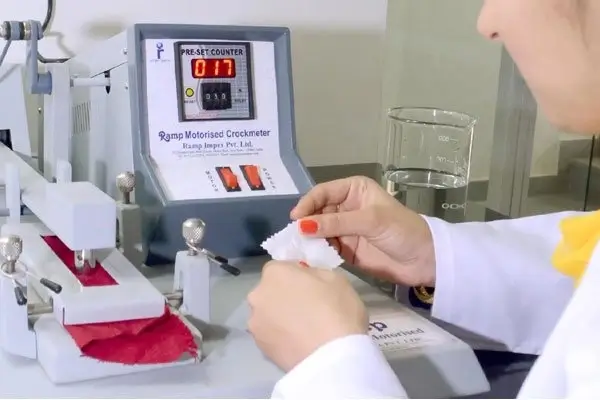
في وجود ، قمنا بتطوير بروتوكولات شاملة لتقييم الجودة للملابس النشطة. لقد علمنا تجربتنا في التصنيع للعلامات التجارية الرئيسية ما الذي يفصل المنتجات الاستثنائية عن المنتجات المتوسطة. إليكم كيف نوصي بتقييم جودة الملابس النشطة:
طرق الاختبار الموضوعية
يمكن لعدة اختبارات موحدة أن تقيس بشكل موضوعي أداء الملابس النشطة:
اختبار إدارة الرطوبة
- اختبار الفتل الرأسي: يقيس مدى سرعة الرطوبة التي تنتقل إلى شريط نسيج
- اختبار إدارة الرطوبة (MMT): يقيم الفتل متعدد الأبعاد
- اختبار معدل التجفيف: يقيس مدى سرعة جفاف النسيج بعد الترطيب
اختبار التمدد والاسترداد
- نسبة التمدد: يقيس أقصى قدر من التمديد قبل تلف النسيج
- معدل الاسترداد: يقيم كيف يعود النسيج بالكامل إلى الأبعاد الأصلية
- اختبار التمدد المتكرر: يحاكي متعددة التآكل والغسل
اختبار المتانة
- اختبار تآكل مارتينديل: يقيس مقاومة التآكل السطحي
- مقاومة حبوب منع الحمل: يقيم الميل لتشكيل كرات زغب السطح
- colorfastness: يختبر الاحتفاظ بالألوان بعد الغسيل والتعرق والتعرض للضوء
- الاستقرار الأبعاد: يقيس الانكماش أو التمدد بعد الغسيل
اختبار الغضب
مهم بشكل خاص لارتداء اليوغا:
- عتامة التمدد: اختبار الشفافية عند تمديد النسيج
- اختبار الانحناء: تقييم التغطية أثناء مواقف الانحناء العميق
- اختبار مربع الضوء: قياس انتقال الضوء من خلال النسيج
تقنيات التقييم العملي
ما وراء الاختبار المعملي ، يوفر التقييم العملي رؤى قيمة:
اختبار الحركة
- ارتداء الاختبار: وجود مستخدمين فعليين يؤدون أنشطة في الملابس
- نطاق تقييم الحركة: التحقق من التقييد أثناء الحركة
- ركوب/التقييم لأسفل: اختبار إذا بقيت الملابس في مكانها أثناء النشاط
تقييم الراحة
- يشعر اليد: تقييم النعومة والملمس ضد الجلد
- مدى ملاءمة الوزن: ضمان تطابقات وزن النسيج المقصود النشاط
- تحديد نقطة الضغط: التحقق من مناطق الانزعاج أثناء التآكل
فحص البناء
- قوة التماس: اختبار مقاومة الظهور أثناء التمدد
- غرزة الاتساق: تقييم التوازن والتوتر
- تقليم الأمن: التحقق من مرفق الأجهزة والعلامات والعناصر الزخرفية
مشكلات الجودة الشائعة لمراقبة
استنادًا إلى تجربة التصنيع الخاصة بنا في الحصول على مشكلات الجودة الأكثر شيوعًا لتحديد:
| قضية الجودة | طريقة تحديد الهوية | التأثير المحتمل |
|---|---|---|
| حبوب منع الحمل | التفتيش البصري بعد التآكل/الغسيل ، اختبار التآكل | ضعف المظهر ، انخفاض رضا العملاء |
| فشل التماس | اختبار التمدد ، تقييم الحركة | فشل المنتج ، العوائد ، تلف العلامة التجارية |
| نزيف اللون | غسل الاختبار ، اختبار التجول | شكاوى العملاء ، التالفة الملابس الأخرى |
| قضايا الشفافية | اختبار عتامة التمدد ، والاختبار الانحناء | إحراج العملاء ، والعوائد ، والمراجعات السلبية |
| فقدان الضغط | اختبار الاسترداد بعد غسلات متعددة | انخفاض الأداء ، مظهر فضفاض |
للحصول على معلومات حول تطوير خط الملصق الخاص بك ActiveWear مع معايير الجودة المثلى ، تفضل بزيارة موردنا التفصيلي: علامتك التجارية ، منتجك: الدليل الكامل للملصقات الخاصة (OEM/ODM) Activewear & اليوغا ارتداء التصنيع.
ما هي الابتكارات التي تشكل مستقبل مواد الملابس النشطة؟
يستمر مشهد مواد ActiveWear في التطور بسرعة. يعد البقاء على اطلاع على التقنيات والابتكارات الناشئة أمرًا ضروريًا للشركات التي تتطلع إلى الحفاظ على ميزة تنافسية.
يتم تشكيل مستقبل ActiveWear من خلال العديد من الابتكارات الرئيسية: التطورات المادية المستدامة (الألياف المعاد تدويرها وقابلة للتحلل البيولوجي) ، والمنسوجات الذكية مع التكنولوجيا المتكاملة ، والأقمشة الحرارية المتقدمة ، ومواد الأداء الطبيعية التي تجمع بين الصدفة البيئية مع الوظيفة الفنية.
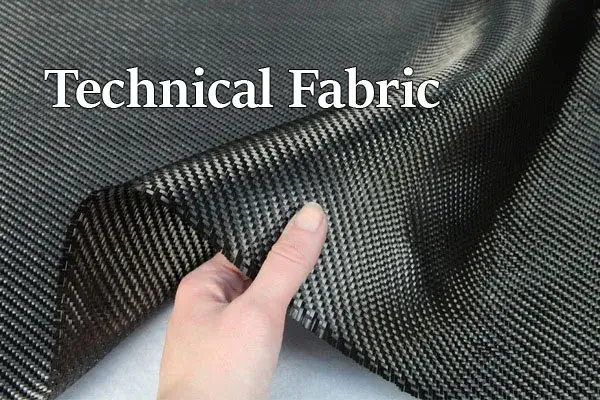
في وجودنا ، نحن نبحث باستمرار وتطوير مناهج جديدة لمواد الملابس النشطة. لدينا ص&يركز D Team على الابتكارات التي تحل نقاط ألم المستهلك الحقيقية مع تحسين الاستدامة. فيما يلي التطورات الرئيسية التي نراها:
ابتكارات المواد المستدامة
البدائل الصديقة للبيئة تتقدم بسرعة:
- تطور البوليستر المعاد تدويره: تحسين المعالجة خلق الأداء التكافؤ مع المواد البكر
- المواد التركيبية القائمة على الحيوية: بدائل البوليستر والنايلون المستمدة جزئيًا
- بدائل الإيلاستين القابلة للتحلل: معالجة المكون الأقل استدامة في أقمشة التمدد
- ألياف الأداء الطبيعي: محسّن من القطن والقنب والخيزران مع الأداء الهندسي
المنسوجات الذكية والسريعة الاستجابة
تكامل التكنولوجيا يخلق إمكانيات جديدة:
- أقمشة مستجيبة لدرجة الحرارة: المواد التي تتكيف مع حرارة الجسم والظروف البيئية
- التهوية التي تثير الرطوبة: الهياكل المفتوحة عند اكتشاف الرطوبة
- أجهزة استشعار مضمنة: الأقمشة مع قدرات تتبع اللياقة المتكاملة
- المنسوجات المولدة للطاقة: المواد التي تحصد الطاقة من الحركة
تقنيات الأداء المتقدمة
أساليب جديدة لاحتياجات الأداء الأساسية:
- تقنية الصبغ الجاف: عمليات الصباغة بدون ماء تقلل من التأثير البيئي
- التشطيبات متعددة الوظائف: علاجات واحدة توفر فوائد متعددة (مضادات الميكروبات + التبريد)
- ضغط هندسي: مستويات الضغط الخاصة بالمنطقة في ملابس واحدة
- المواد الطبيعية المعززة: العلاجات التي تعطي ألياف أداء الأداء
التوقعات المستقبلية
بناءً على تجربتنا الصناعية و R.&D في وجود ، نتوقع العديد من التطورات الرئيسية في مواد ActiveWear على مدار 3-5 سنوات القادمة:
- اعتماد مواد معاد تدويرها السائدة: المحتوى المعاد تدويره يصبح قياسيًا وليس قسطًا
- خلطات الاصطناعية القابلة للتحلل: معالجة مخاوف نهاية الحياة لأقمشة الأداء
- سلاسل التوريد المبسطة: التقنيات تقلل من خطوات المعالجة والتأثير البيئي
- تقنيات التخصيص: مواد قابلة للتكيف مع أنواع الجسم الفردية وتفضيلاتها
للحصول على رؤى حول كيفية تأثير هذه الابتكارات على استراتيجية تطوير المنتجات الخاصة بك ، استكشف دليلنا على حالة العمل للملابس النشطة المستدامة & ارتداء اليوغا: تلبية الطلب على المستهلك & تعزيز قيمة العلامة التجارية.
خاتمة
يعد فهم تقنية ومواد ارتداء اليوغا ActiveWear وليوغا ضروريًا لإنشاء منتجات تؤدي وتوقعات المستهلك حقًا. من خلال اختيار الأقمشة المناسبة للأنشطة المحددة ، وتنفيذ تقنيات البناء المناسبة ، وإنشاء طرق تقييم جودة صارمة ، يمكن للشركات تطوير ملابس نشطة تبني ولاء العلامة التجارية وتدفع النمو.
في الحصول على الخبرة التقنية مع القدرة على إنشاء ملابس نشطة تعمل باستمرار مع تلبية متطلبات المستهلك المتطورة لكل من الوظيفة والاستدامة.
الأسئلة المتداولة (الأسئلة الشائعة)
ما الفرق بين البوليستر والنايلون للملابس النشطة؟
يوفر البوليستر عادةً إدارة رطوبة فائقة والاحتفاظ بالألوان ، بينما يوفر النايلون امتدادًا أفضل واستردادًا وشعورًا أكثر ليونة. غالبًا ما يفضل البوليستر للأنشطة عالية الكثافة التي تولد عرقًا كبيرًا ، بينما يتفوق النايلون في تطبيقات اليوغا والاستوديو حيث يكون التمدد والراحة أمرًا بالغ الأهمية.
ما مقدار الإيلاستين الذي يجب أن تحتويه الملابس النشطة؟
تحتوي معظم الأزياء النشطة ذات الأداء العالي على إيلاستين 15-25 ٪ (سبانديكس/ليكرا). قد تحتوي ملابس الضغط على ما يصل إلى 30 ٪ ، في حين أن عناصر الدعم الأخف قد تستخدم 10-15 ٪. تؤثر النسبة المئوية على كل من قدرة التمدد وأداء الاسترداد.
ما الذي يسبب حبوب منع الحمل في الملابس النشطة وكيف يمكن منعه؟
تحدث حبوب منع الحمل عندما تعمل الألياف القصيرة فضفاضة وتتشابك وتشكل كرات صغيرة على سطح القماش. تشمل استراتيجيات الوقاية استخدام الألياف الأساسية الطويلة ، والإنشاءات المتماسكة أكثر إحكاما ، ومزيج الألياف المناسبة ، والتشطيبات الخاصة المضادة للمسؤول أثناء التصنيع.
كيف يمكنني اختبار ما إذا كانت طماق ستكون مقاومة للقرفصاء؟
إجراء اختبار الانحناء من خلال جعل شخص ما يرتدي طماق والانحناء للأمام في إضاءة جيدة. لاختبار الإنتاج ، استخدم اختبار عتامة موحدة مع صندوق إضاءة خلف النسيج الممتد. يجب أن تحافظ طماق اليوغا الجودة على ما لا يقل عن 70-80 ٪ من التعتيم عند امتداده إلى أقصى قدر من التمديد.
ما هي أكثر طريقة البناء دواما لدرزات الأزياء النشطة؟
توفر طبقات Flatlock أفضل مزيج من المتانة والراحة والأداء لمعظم تطبيقات الملابس النشطة. للحصول على أقصى قدر من المتانة في مناطق الإجهاد القصوى ، توفر طبقات المسطحة المعززة مع bartacking إضافية قوة فائقة.
كيف تقارن المواد المستدامة بالمواد التقليدية في الأداء؟
يمكن للبوليستر المعاد تدويره الحديثة مطابقة المواد التقليدية في الأداء ، مع اختلافات أقل من 5 ٪ في المقاييس الرئيسية مثل رطوبة الرطوبة والمتانة. ضاقت فجوة الأداء بشكل كبير في السنوات الأخيرة مع تحسن تقنية إعادة التدوير.
